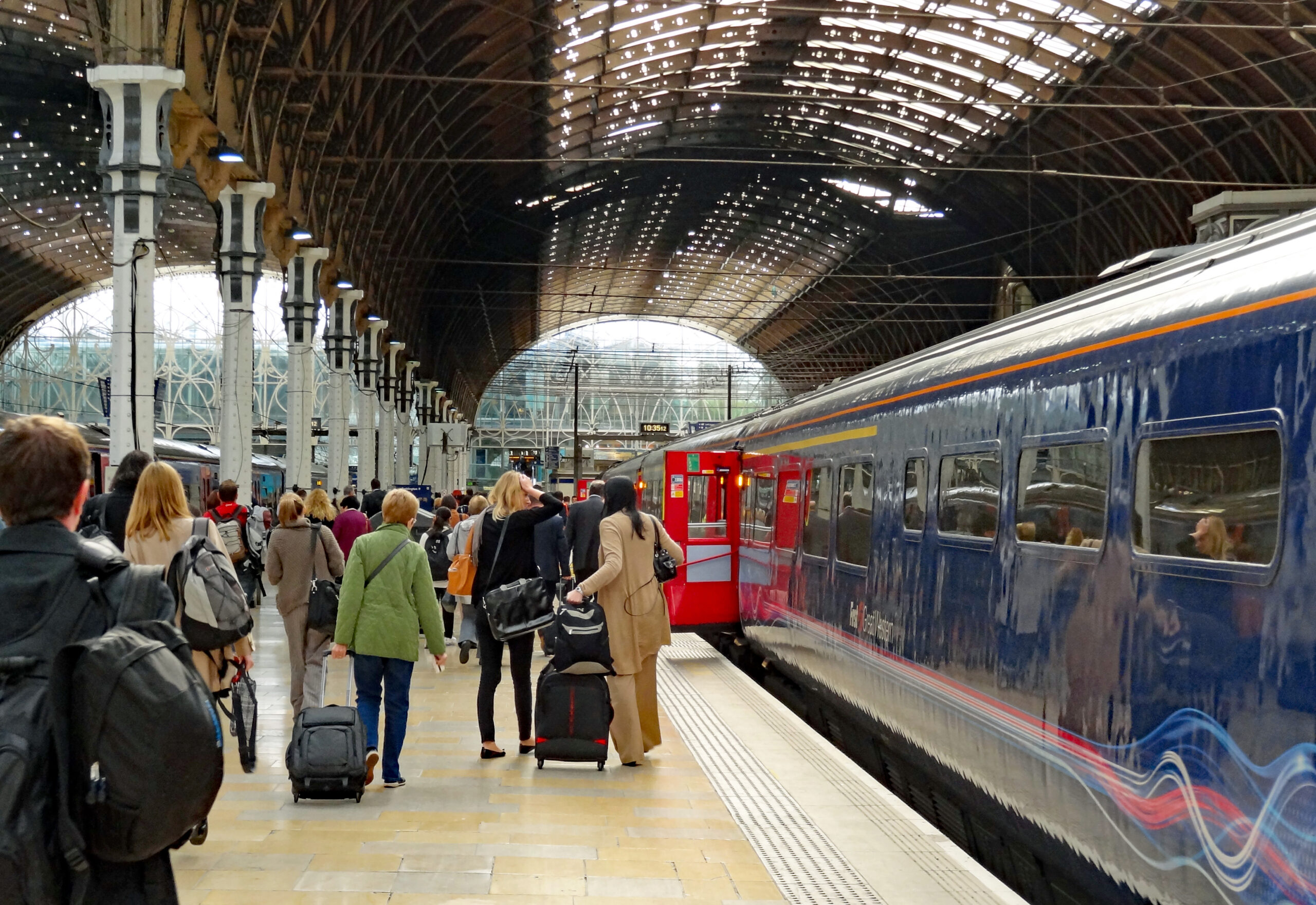 In many countries, train fares at peak times are higher than at off-peak times. This is an example of third-degree price discrimination. Assuming that peak-time travellers generally have a lower price elasticity of demand, the policy allows train companies to increase revenue and profit.
In many countries, train fares at peak times are higher than at off-peak times. This is an example of third-degree price discrimination. Assuming that peak-time travellers generally have a lower price elasticity of demand, the policy allows train companies to increase revenue and profit.
If the sole purpose of ticket sales were to maximise profits, the policy would make sense. Assuming that higher peak-time fares were carefully set, although the number travelling would be somewhat reduced, this would be more than compensated for by the higher revenue per passenger.
But there are external benefits from train travel. Compared with travel by car, there are lower carbon emissions per person travelling. Also, train travel helps to reduce road congestion. To the extent that higher peak-time fares encourage people to travel by car instead, there will be resulting environmental and congestion externalities.
The Scottish experiment with abolishing higher peak-time fares
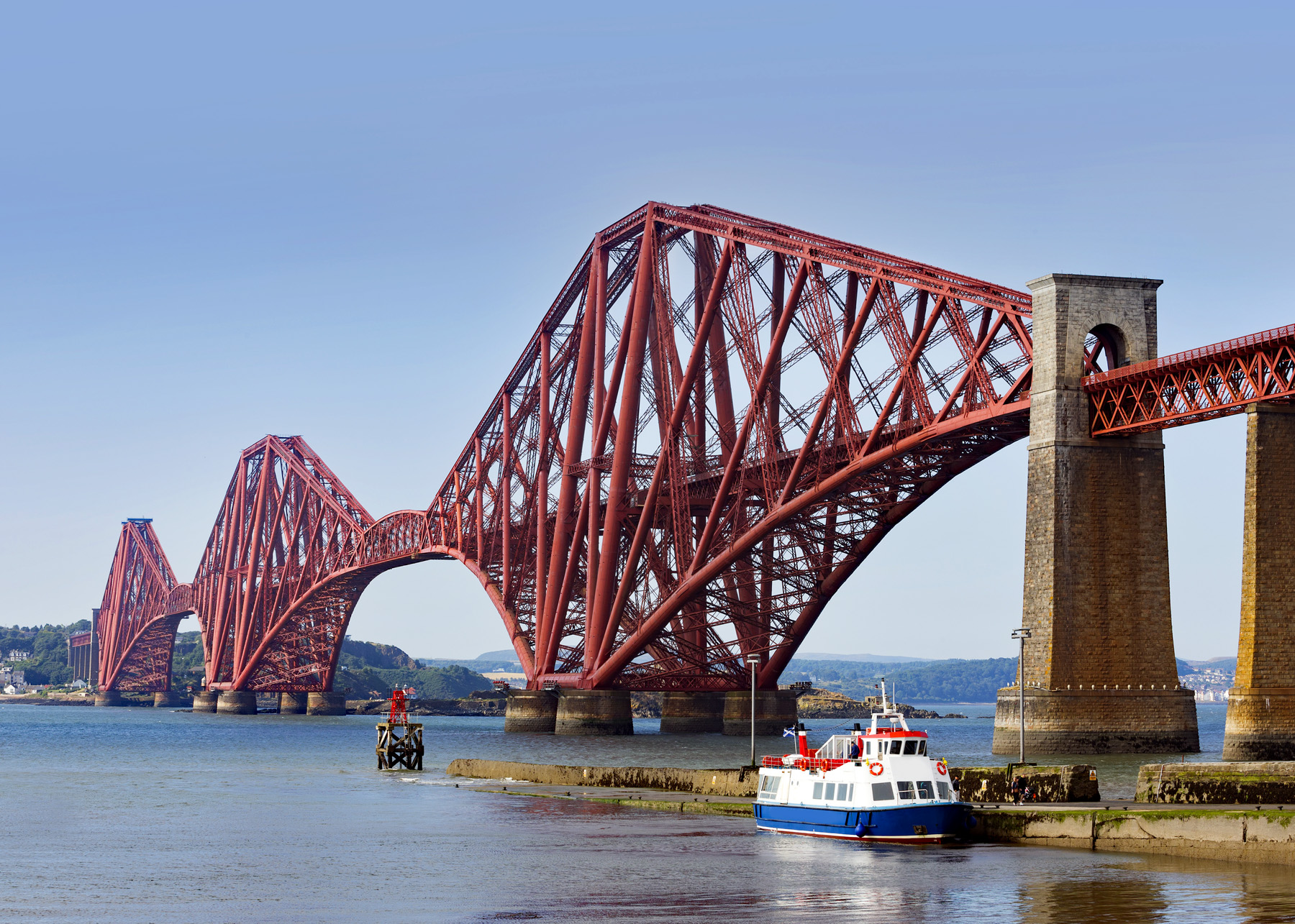 In October 2023, the Scottish government introduced a pilot scheme abolishing peak-time fares, so that tickets were the same price at any time of the day. The idea was to encourage people, especially commuters, to adopt more sustainable means of transport. Although the price elasticity of demand for commuting is very low, the hope was that the cross-price elasticity between cars and trains would be sufficiently high to encourage many people to switch from driving to taking the train.
In October 2023, the Scottish government introduced a pilot scheme abolishing peak-time fares, so that tickets were the same price at any time of the day. The idea was to encourage people, especially commuters, to adopt more sustainable means of transport. Although the price elasticity of demand for commuting is very low, the hope was that the cross-price elasticity between cars and trains would be sufficiently high to encourage many people to switch from driving to taking the train.
One concern with scrapping peak-time fares is that trains would not have the capacity to cope with the extra passengers. Indeed, one of the arguments for higher peak-time fares is to smooth out the flow of passengers during the day, encouraging those with flexibility of when to travel to use the cheaper and less crowded off-peak trains.
This may well apply to certain parts of the UK, but in the case of Scotland it was felt that there would be the capacity to cope with the extra demand at peak time. Also, in a post-COVID world, with more people working flexibly, there was less need for many people to travel at peak times than previously.
Reinstatement of peak-time fares in Scotland
It was with some dismay, therefore, especially by commuters and environmentalists, when the Scottish government decided to end the pilot at the beginning of October 2024 and reinstate peak-time fares – in many cases at nearly double the off-peak rates. For example, the return fare between Glasgow and Edinburgh rose from £16.20 to £31.40 at peak times.
The Scottish government justified the decision by claiming that passenger numbers had risen by only 6.8%, when, to be self-financing, an increase of 10% would have been required. But this begs the question of whether it was necessary to be self-financing when the justification was partly environmental. Also, the 6.8% figure is based on a number of assumptions that could be challenged (see The Conversation article linked below). A longer pilot would have helped to clarify demand.
Other schemes
A number of countries have introduced schemes to encourage greater use of the railways or other forms of public transport. One of these is the flat fare for local journeys. Provided that this is lower than previously, it can encourage people to use public transport and leave their car at home. Also, its simplicity is also likely to be attractive to passengers. For example, in England bus fares are capped at £2. Currently, the scheme is set to run until 31 December 2024.
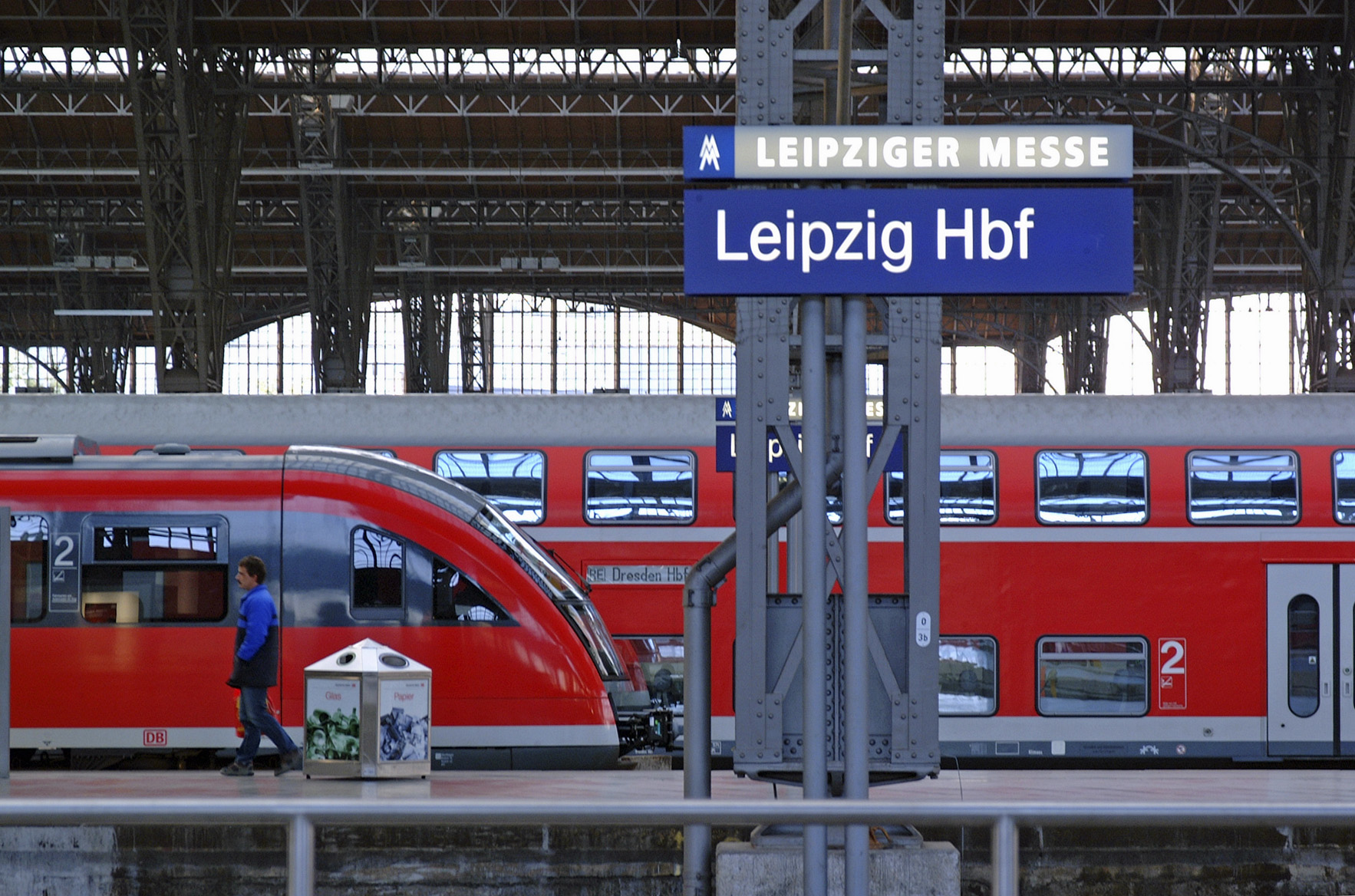 Another scheme is the subscription model, whereby people pay a flat fee per month (or week or year, or other time period) for train or bus travel or both. Germany, for example, has a flat-rate €49 per month ‘Deutschland-Ticket‘ (rising to €58 per month in January 2025). This ticket provides unlimited access to local and regional public transport in Germany, including trains, buses, trams, metros and ferries (but not long-distance trains). This zero marginal fare cost of a journey encourages passengers to use public transport. The only marginal costs they will face will be ancillary costs, such as getting to and from the train station or bus stop and having to travel at a specific time.
Another scheme is the subscription model, whereby people pay a flat fee per month (or week or year, or other time period) for train or bus travel or both. Germany, for example, has a flat-rate €49 per month ‘Deutschland-Ticket‘ (rising to €58 per month in January 2025). This ticket provides unlimited access to local and regional public transport in Germany, including trains, buses, trams, metros and ferries (but not long-distance trains). This zero marginal fare cost of a journey encourages passengers to use public transport. The only marginal costs they will face will be ancillary costs, such as getting to and from the train station or bus stop and having to travel at a specific time.
Articles
- Why a pilot scheme removing peak rail fares should have been allowed to go the distance
The Conversation, Rachel Scarfe (8/10/24)
- Return of peak rail fares a costly blow for commuters and climate, Scottish Greens say
Bright Green, Chris Jarvis (6/10/24)
 Commuters react to return of peak train fares in Scotland
Commuters react to return of peak train fares in ScotlandBBC News (1/10/24)
- Perth peak rail fares to Edinburgh rise by almost 60 percent as pilot scheme ends
Daily Record, Alastair McNeill (4/10/24)
- Ditch peak-time rail fares across UK, campaigners say
iNews, Adam Forrest (30/9/24)
- Train fares reduced by up to 20% in East Yorkshire
Rail Advent, Roger Smith (26/9/24)
- Deutschland-Ticket: Germany’s popular monthly transport pass will soon be more expensive
Euronews, Angela Symons (24/9/24)
- Fare Britannia: a new approach to public transport ticketing for the UK
Greenpeace report, Leo Eyles, Tony Duckenfield and Jim Steer (19/9/24)
- Ministers urged to trial monthly ‘climate card’ in North of England to save rail commuters money and cut emissions
About Manchester, Nigel Barlow (20/9/24)
Questions
- Identify the arguments for and against having higher rail fares at peak times than at off-peak times
- Why might it be a good idea to scrap higher peak-time fares in some parts of a country but not in others?
- Provide a critique of the Scottish government’s arguments for reintroducing higher peak-time fares.
- With reference to The Conversation article, why is it difficult to determine the effect on demand of the Scottish pilot of scrapping peak-time fares?
- What are the arguments for and against the German scheme of having a €49 per month public transport pass for local and regional transport with no further cost per journey? Should it be extended to long-distance trains and coaches?
- In England there is a flat £2 single fare for buses. Would it be a good idea to make bus travel completely free?
 On Saturday 31 August, tickets for the much-heralded Oasis reunion tour went on sale through the official retailer, Ticketmaster. When the company sells tickets, the acts or their promoters can choose whether to use a static pricing system, where each type of ticket is sold at a set price until they have all been sold. Or they can use a dynamic pricing system (‘in-demand’ or ‘platinum’ tickets, as Ticketmaster calls them), where there is a starting price quoted, but where prices then rise according to demand. The higher the demand, the more the price is driven up. Acts or their promoters have the option of choosing an upper limit to the price.
On Saturday 31 August, tickets for the much-heralded Oasis reunion tour went on sale through the official retailer, Ticketmaster. When the company sells tickets, the acts or their promoters can choose whether to use a static pricing system, where each type of ticket is sold at a set price until they have all been sold. Or they can use a dynamic pricing system (‘in-demand’ or ‘platinum’ tickets, as Ticketmaster calls them), where there is a starting price quoted, but where prices then rise according to demand. The higher the demand, the more the price is driven up. Acts or their promoters have the option of choosing an upper limit to the price.
Dynamic pricing
The Oasis tickets were sold under the dynamic pricing system, a system previously used for Harry Styles, Bruce Springsteen, Coldplay and Blackpink concerts, but one rejected by Taylor Swift for her recent Eras tour. Standing tickets for the Oasis concert with a face value of around £135 were quickly being sold for over £350. There were long online queues, with the prices rising as people slowly moved up the queue. When they reached the front, they had to decide quickly whether to pay the much higher price. Some people later suffered from buyer’s remorse, when they realised that in the pressure of the moment, they had paid more than they could afford.
Dynamic pricing is when prices change with market conditions: rising at times when demand exceeds supply and falling when supply exceeds demand. It is sometimes referred to as ‘surge pricing’ to reflect situations when price surges in times of excess demand.
Dynamic pricing is a form of price discrimination. It is an imperfect form of first-degree price discrimination, which is defined as people being charged the maximum price they are willing to pay for a product. Pricing in an eBay auction comes close to first-degree price discrimination. With dynamic pricing in the ticket market, some people may indeed pay the maximum, but others earlier in the queue will be lucky and pay less than their maximum.
Ticketmaster justifies the system of dynamic pricing, saying that it gives ‘fans fair and safe access to the tickets, while enabling artists and other people involved in staging live events to price tickets closer to their true market value’. The company argues that if the price is below the market value, a secondary market will then drive ticket prices up. Ticket touts will purchase large amounts of tickets, often using bots to access the official site and then resell them at highly inflated prices on sites such as Viagogo and Stubhub, where ticket prices for popular acts can sell for well over £1000. The day after Oasis tickets went on sale, Viagogo had seats priced at up to £26 000 each!
Oasis and Ticketmaster have tried to stamp out the unofficial secondary market by stating that only tickets bought through the official retailers (Ticketmaster, Gigsandtours and SeeTickets) will be valid. If fans want to resell a ticket – perhaps because they find they can no longer go – they can resell them on the official secondary market though Ticketmaster’s Fan-to-Fan site or Twickets. These official secondary sites allow holders of unwanted tickets to sell them for anything up to the original face value, but no more. Buyers pay a 12% handling fee. It remains to be seen whether this can be enforced with genuine tickets resold on the secondary market.
Examples of dynamic pricing
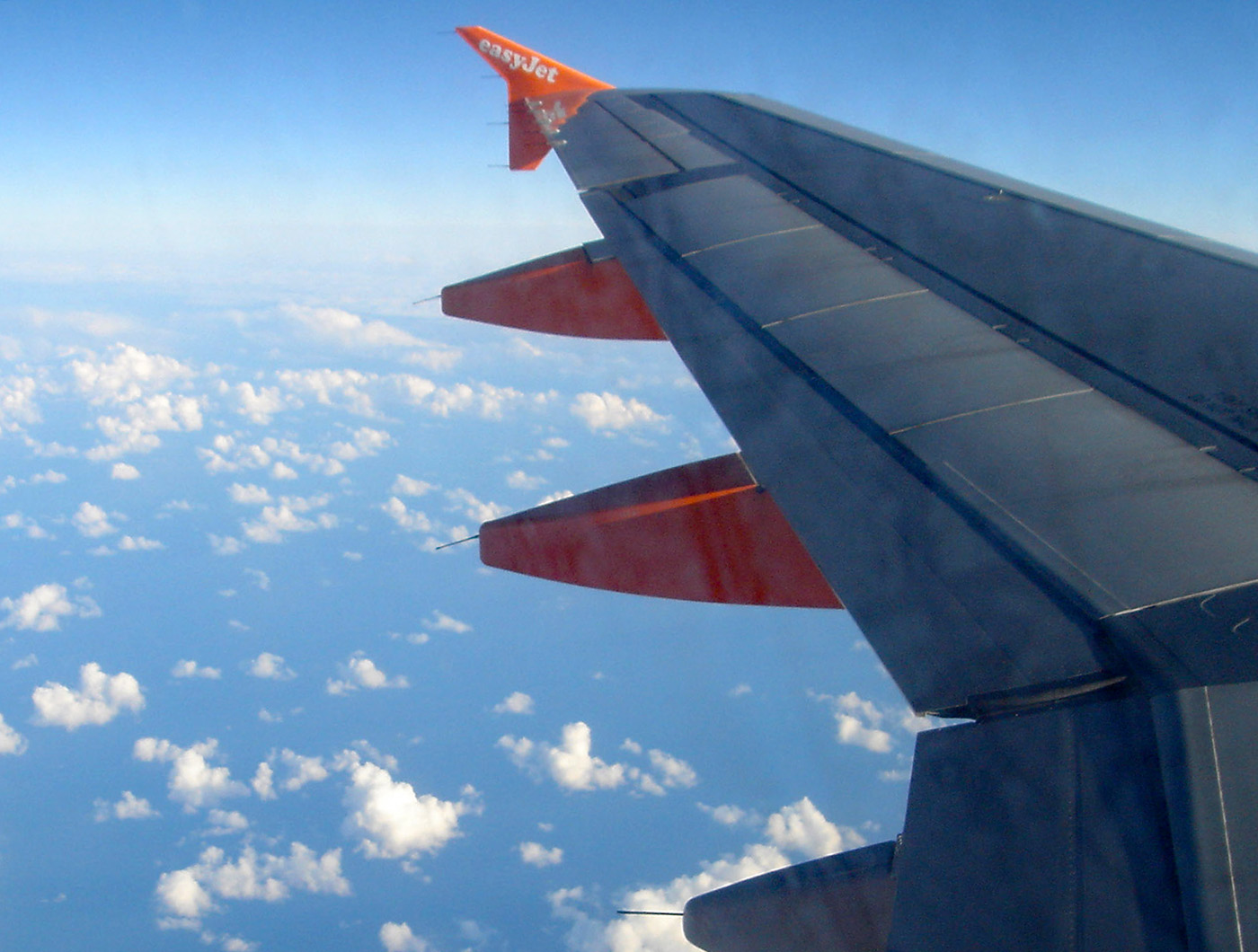 Dynamic pricing is not a new pricing strategy. It has been used for many years in the transport, e-commerce and hospitality sectors. Airlines, for example, have a pricing model whereby as a flight fills up, so the prices of the seats rise. If you book a seat on a budget airline a long time in advance, you may be able to get it at a very low price. If, on the other hand, you want a seat at the last minute, you may well have to pay a very high price. The price reflects the strength of demand and its price elasticity. The business traveller who needs to travel the next day for a meeting will have a very low price sensitivity and may well be prepared to pay a very high price indeed. Airlines also learn from past behaviour and so some popular routes will start at a higher price. A similar system of dynamic pricing is used with advance train tickets, with the price rising as trains get booked up.
Dynamic pricing is not a new pricing strategy. It has been used for many years in the transport, e-commerce and hospitality sectors. Airlines, for example, have a pricing model whereby as a flight fills up, so the prices of the seats rise. If you book a seat on a budget airline a long time in advance, you may be able to get it at a very low price. If, on the other hand, you want a seat at the last minute, you may well have to pay a very high price. The price reflects the strength of demand and its price elasticity. The business traveller who needs to travel the next day for a meeting will have a very low price sensitivity and may well be prepared to pay a very high price indeed. Airlines also learn from past behaviour and so some popular routes will start at a higher price. A similar system of dynamic pricing is used with advance train tickets, with the price rising as trains get booked up.
The dynamic pricing system used by airlines and train companies is similar, but not identical, to first-degree price discrimination. The figure below illustrates first-degree price discrimination by showing a company setting the price for a particular product.
Assume initially that it sets a single profit-maximising price. This would be a price of P1, at an output of Q1, where marginal revenue (MR) equals marginal cost (MC). (We assume for simplicity that average and marginal costs are constant.) Total profit will be area 1: i.e. the blue area ((P1 – AC) × Q1). Area 2 represents consumer surplus, with all those consumers who would have been prepared to pay a price above P1, only having to pay P1.
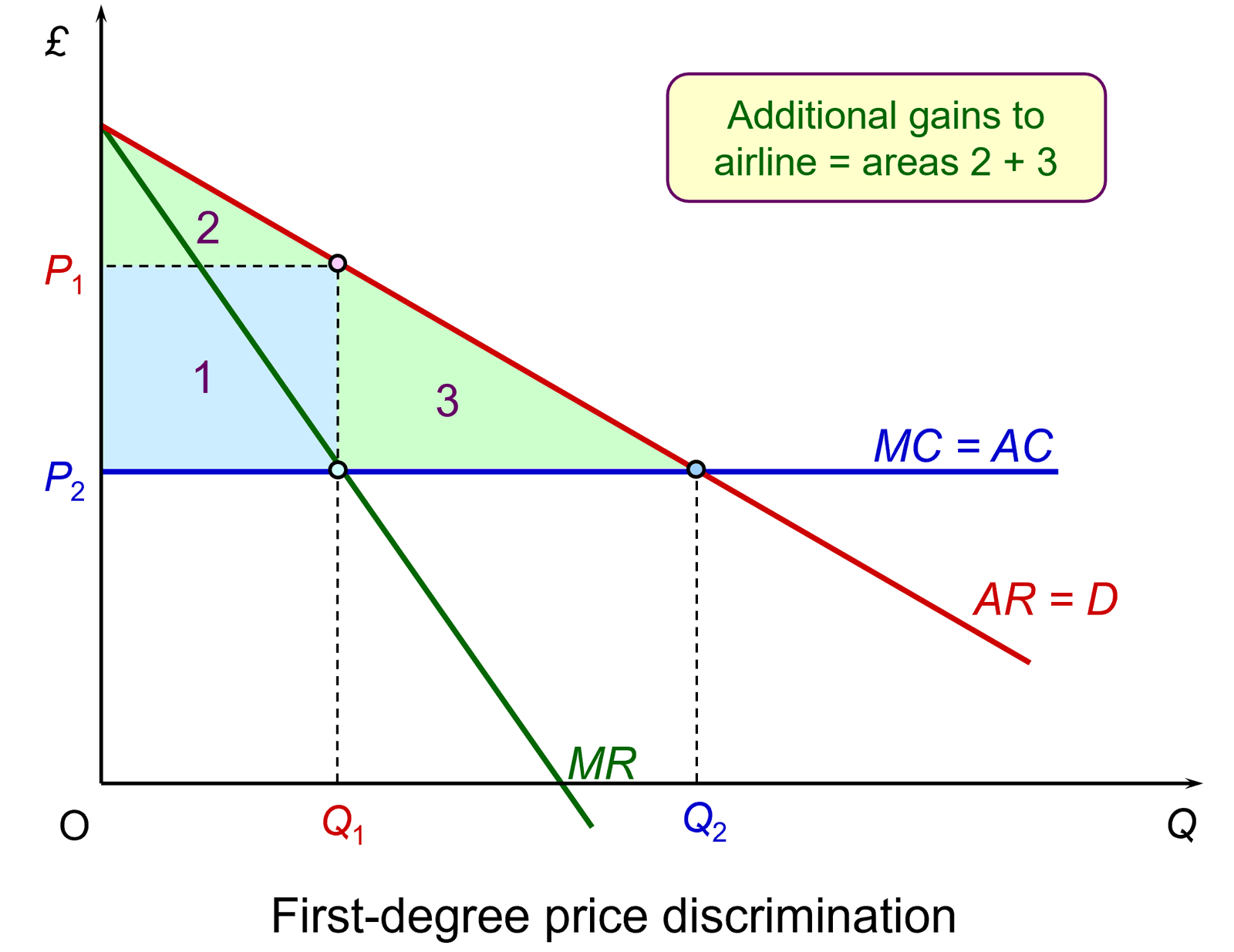 Now assume that the firm uses first-degree price discrimination, selling each unit of the product at the maximum price each consumer is willing to pay. Starting with the consumer only willing to pay a price of P2, the price will go on rising up along the demand with each additional consumer being charged a higher price up to the price where the demand curve meets the vertical axis. In such a case, the firm’s profit would be not just the blue area, but also the green areas 2 and 3. Note that there is no consumer surplus as area 2 is now part of the additional profit to the firm.
Now assume that the firm uses first-degree price discrimination, selling each unit of the product at the maximum price each consumer is willing to pay. Starting with the consumer only willing to pay a price of P2, the price will go on rising up along the demand with each additional consumer being charged a higher price up to the price where the demand curve meets the vertical axis. In such a case, the firm’s profit would be not just the blue area, but also the green areas 2 and 3. Note that there is no consumer surplus as area 2 is now part of the additional profit to the firm.
Although dynamic pricing by airlines is similar to this model of first-degree price discrimination, in practice some people will be paying less than they would be willing to pay and the price goes up in stages, not continuously with each new sale of a ticket. Thus, compared with a fixed price per seat, the additional profit will be less than areas 2 + 3, but total profit will still be considerably greater than area 1 alone. Note also that there is a maximum quantity of seats (Qmax), represented by a full flight. The airline would hope that demand and its pricing model are such that Qmax is less than Q2.
Dynamic pricing also applies in the hospitality sector, as hotels raise the prices for rooms according to demand, with prices at peak times often being considerably higher than off-season prices. Rather then pre-setting prices for particular seasons, dates or weekends/weekdays, many hotels, especially chains and booking agents, adjust prices dynamically as demand changes. Airbnb offers property owners what it calls ‘Smart Pricing’, where nightly prices change automatically with demand.
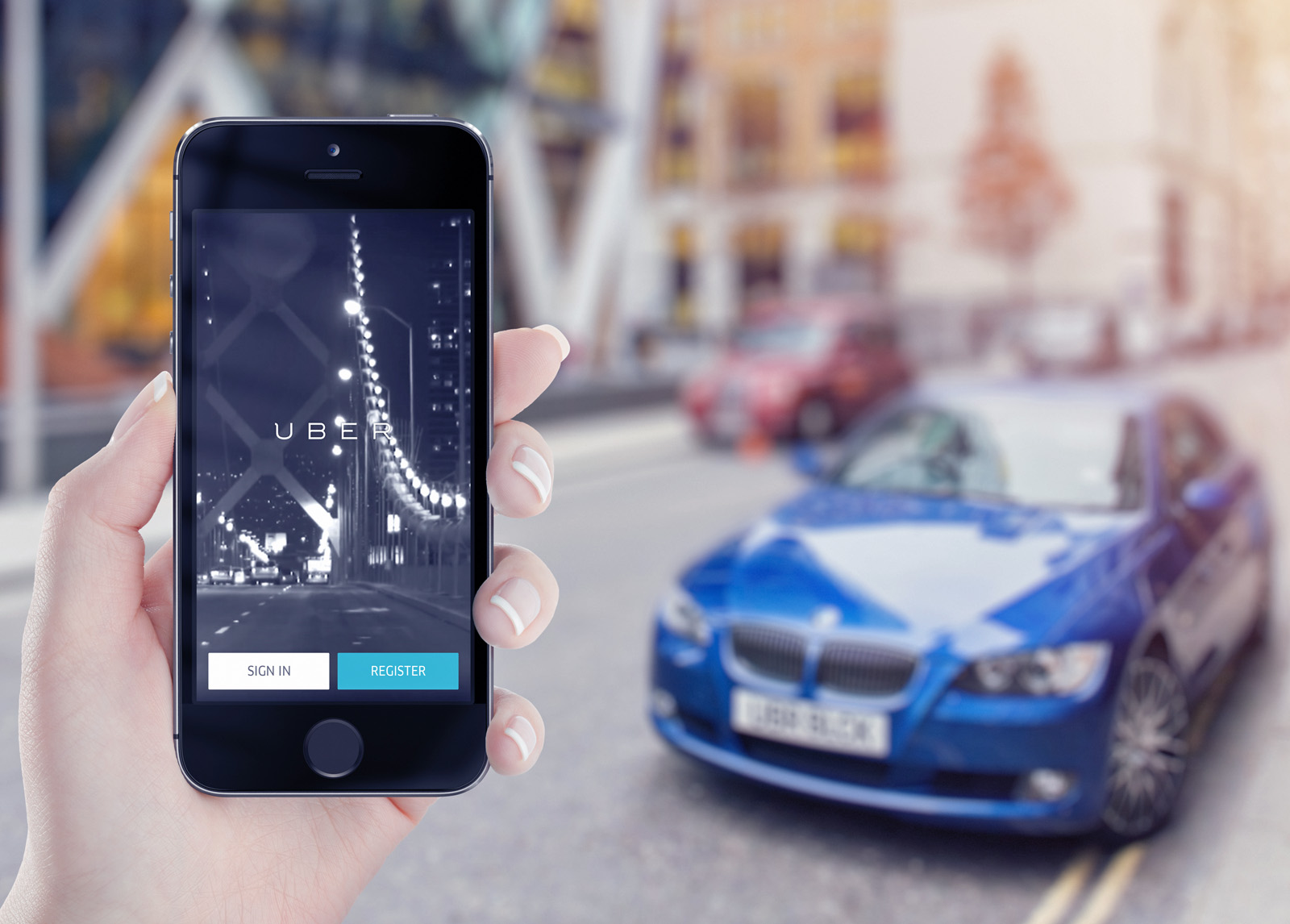 Another example is Uber, which uses dynamic pricing to balance demand and supply location by location. In times of peak demand on any route, the company’s algorithm will raise the price. This will encourage people to delay travelling if they can or use alternative means of transport. It will also encourage more Uber drivers to come to that area. In times of low demand, the price will fall. This will encourage more people to use the service (rather than regular taxis or buses) and discourage drivers from working in that area.
Another example is Uber, which uses dynamic pricing to balance demand and supply location by location. In times of peak demand on any route, the company’s algorithm will raise the price. This will encourage people to delay travelling if they can or use alternative means of transport. It will also encourage more Uber drivers to come to that area. In times of low demand, the price will fall. This will encourage more people to use the service (rather than regular taxis or buses) and discourage drivers from working in that area.
Where dynamic pricing varies with the time or date when the purchase is made, it is sometimes referred to as inter-temporal pricing. It is a form of second-degree price discrimination, which is where a firm offers consumers a range of different pricing options for the same or similar products.
Another example of dynamic pricing, which is closer to first-degree price discrimination is the use of sophisticated algorithms and AI by Amazon, allowing it to update the prices of millions of products many times a day according to market conditions. Another is eBay auctions, where the price rises as the end date is reached, according to the willingness to pay of the bidders.
Attitudes to dynamic pricing
Consumers have grown accustomed to dynamic pricing in many industries. People generally accept the pricing model of budget airlines, for example. What makes it acceptable is that most people feel that they can take advantage of early low-priced seats and can compare the current prices on different flights and airlines when making their travel plans. Pricing is transparent. With the Oasis concert, however, there wasn’t the same degree of price transparency. Many people were surprised and dismayed to find that when they got to the front of the online queue, the price had risen dramatically.
People are familiar of dynamic pricing in the context of price cuts to shift unsold stock. Supermarkets putting stickers on products saying ‘reduced for quick sale’ is an example. Another is seasonal sales. What is less acceptable to many consumers is firms putting up prices when demand is high. They see it a profiteering. Many supermarkets are introducing electronic shelf labels (ESLs), where prices can be changed remotely as demand changes. Consumers may react badly to this if they see the prices going up. The supermarket, however, may find it a very convenient way of reducing prices to shift stock – something consumers are hardly likely to complain about.
 Returning to the Oasis tour, the UK government responded to the outrage of fans as ticket prices soared. Culture Secretary, Lisa Nandy, announced that the government will investigate how surge pricing for concert tickets is used by official retailers, such as Ticketmaster. This will be part of a planned review of ticket sales that seeks to establish a fairer and more transparent system of pricing.
Returning to the Oasis tour, the UK government responded to the outrage of fans as ticket prices soared. Culture Secretary, Lisa Nandy, announced that the government will investigate how surge pricing for concert tickets is used by official retailers, such as Ticketmaster. This will be part of a planned review of ticket sales that seeks to establish a fairer and more transparent system of pricing.
The problem is that, with some fans being prepared to pay very high prices indeed to see particular acts and with demand considerably exceeding supply at prices that fans would consider reasonable, some way needs to be found of rationing demand. If it is not price, then it will inevitably involve some form of queuing or rationing system, with the danger that this encourages touts and vastly inflated prices on the secondary market.
Perhaps a lesson can be drawn from the Glastonbury Festival, where prices are fixed, people queue online and where security systems are in place to prevent secondary sales by ticket touts. The 2024 price was set at £355 + a £5 booking fee and purchasers were required to register with personal details and a photo, which was checked on admission.
Update
On 5 September, the CMA announced that it was launching an investigation into Ticketmaster over the Oasis concert sales. Its concerns centred on ‘whether buyers were given clear and timely information, and whether consumer protection law was breached’. This followed complaints by fans that (i) they were not given clear and timely information beforehand that the tickets involved dynamic pricing and warned about the possible prices they might have to pay and (ii) on reaching the front of the queue they were put under pressure to buy tickets within a short period of time.
Meanwhile, band member stated that they were unaware that dynamic pricing would be used and that the decision to use the system was made by their management.
Videos
Articles
- Oasis ticket sales – everything you need to know about reunion
BBC News (27/8/24)
- Ticketmaster demand-based pricing system criticised
BBC News, Annabel Rackham (10/10/22)
- I loved Oasis – until I saw Ticketmaster’s dynamic pricing
Metro, Issy Packer (2/9/24)
- A supersonic swindle: my £1,423 Oasis Ticketmaster hell
The Guardian, Josh Halliday (1/9/24)
- Bands urged to oppose dynamic pricing of concert tickets after Oasis ‘fiasco’
The Guardian, Josh Halliday and Rob Davies (1/9/24)
- Oasis tickets: what is dynamic pricing and why is it used for live music?
The Guardian, Rob Davies (1/9/24)
- Viagogo defends reselling Oasis tickets for thousands of pounds as ‘legal’
City A.M. (31/8/24)
- Oasis fans face ‘eye-watering’ resale ticket prices
i News, Adam Sherwin (30/8/240
- Would you really pay €500 for an Oasis ticket?
RTE Brainstorm, Emma Howard (3/9/24)
- When ‘dynamic pricing’ works – and when it doesn’t
Investors’ Chronicle, Hermione Taylor (11/12/23)
- The pros, cons and misconceptions of dynamic pricing for retailers
Computer Weekly, Glynn Davis (20/6/24)
- Dynamic Pricing (Taylor’s Version)
Linkedin, Economic Insight (10/7/23)
- Dynamic pricing: successful companies that use this pricing strategy
PriceTweakers, Simon Gomez (25/5/24)
- Five lessons for businesses investigating dynamic pricing
FT Strategies
- Inflated Oasis ticket prices ‘depressing’ – government promises review of dynamic pricing
Sky News (2/9/24)
- Lisa Nandy hits out at ‘incredibly depressing’ Oasis ticket sale and orders probe into surge pricing
Independent, Archie Mitchell (2/9/24)
- Oasis ticket row: How Ticketmaster’s owner has grip on UK live music scene
BBC News, Chi Chi Izundu and James Stewart (4/9/24)
- CMA launches investigation into Ticketmaster over Oasis concert sales
CMA Press Release (5/9/24)
- Revealed: the touts offering Oasis tickets for thousands on resale sites
The Guardian, Rob Davies, Hannah Al-Othman and Tiago Rogero (7/9/24)
Questions
- What is the difference between dynamic pricing and surge pricing?
- What is buyer’s remorse? How could dynamic pricing be used while minimising the likelihood of buyer’s remorse?
- Distinguish between first-degree, second-degree and third-degree price discrimination. Do the various forms of dynamic pricing correspond to one or more of these three types?
- Distinguish between consumer and producer surplus. How may dynamic pricing lead to a reduction in consumer surplus and an increase in producer surplus?
- Should Ticketmaster sell tickets on the same basis as tickets for the Glastonbury Festival?
- Is Oasis a monopoly? What are the ticket pricing implications?
- Are there any industries where firms would not benefit from dynamic pricing? Explain.
- What are the arguments for and against allowing tickets to be sold on the secondary market for whatever price they will fetch?
- How powerful is Ticketmaster in the primary and secondary ticket markets?
 In September 2023, the Stonegate Group, the largest pub company in the UK with around 4,500 premises, announced that it was going to start increasing the pint of beer by 20p during busy periods. There was an immediate backlash on social media with many customers calling on people to boycott Stonegate’s pubs such as the Slug & Lettuce and Yates.
In September 2023, the Stonegate Group, the largest pub company in the UK with around 4,500 premises, announced that it was going to start increasing the pint of beer by 20p during busy periods. There was an immediate backlash on social media with many customers calling on people to boycott Stonegate’s pubs such as the Slug & Lettuce and Yates.
This announcement is an example of dynamic pricing, where firms with market power adjust prices relatively quickly in response to changing market conditions: i.e. to changes in demand and supply.
Traditionally, prices set by firms in most retail markets have been less flexible. They may eventually adjust to changing market conditions, but this could take weeks or even months. If a product proves to be popular on a particular day or time, firms have typically left the price unchanged with the item selling out and customers facing empty shelves. If the product is unpopular, then the firm is left with unsold stock.
One business that makes extensive use of dynamic pricing is Amazon. Prices for popular items on Amazon Marketplace change every 10 minutes and can fluctuate by more than 20 per cent in just one hour.
Conditions for dynamic pricing to operate
The Amazon example helps to illustrate the conditions that must be in place for a firm to implement dynamic pricing successfully. These include:
- The capacity to collect and process large amounts of accurate real-time data on the demand for and supply of particular items i.e. the number of sales or the interest in the product.
- The ability to adjust prices in a timely manner in response to changing market conditions indicated by the data.
- Effectively communicating the potential advantages of the pricing strategy to consumers.
Consumer attitudes
 The last point is an interesting one. As the Stonegate example illustrates, consumers tend to dislike dynamic pricing, especially when price rises reflect increases in demand. A previous article on this website discussed the unpopularity of dynamic pricing amongst fans in the ticket market for live musical events.
The last point is an interesting one. As the Stonegate example illustrates, consumers tend to dislike dynamic pricing, especially when price rises reflect increases in demand. A previous article on this website discussed the unpopularity of dynamic pricing amongst fans in the ticket market for live musical events.
The precise reason for the increase in demand, can also have an impact on consumer attitudes. For example, following a mass shooting at a subway station in New York in April 2022, the authorities shut down the underground system. This led to a surge in demand for taxis and this was picked up by the algorithm/software used by Uber’s dynamic pricing system. Fares for Uber cars began to rise rapidly, and people started to post complaints on social media. Uber responded by disabling the dynamic pricing system and capping prices across the city. It also announced that it would refund customers who were charged higher prices after the subway system shut down.
There is a danger for businesses that if they fail to communicate the policy effectively, annoyed customers may respond by shopping elsewhere. However, if it is implemented successfully then it can help businesses to increase their revenue and may also have some advantages for consumers.
The growing popularity of dynamic pricing
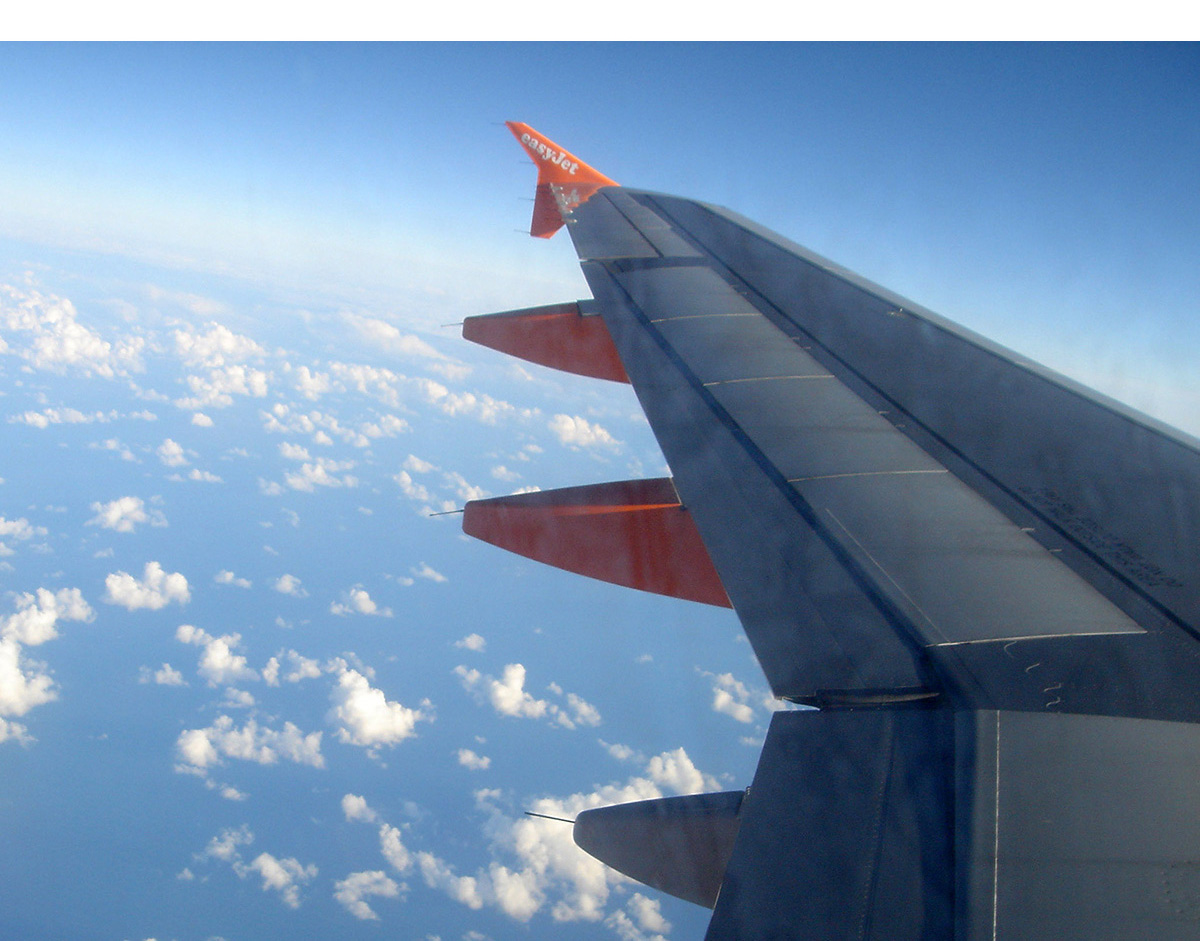 It has been widely used in airline and hotel industries for many years. Robert Cross, who chairs a revenue management company predicts that ‘It will eventually be everywhere’.
It has been widely used in airline and hotel industries for many years. Robert Cross, who chairs a revenue management company predicts that ‘It will eventually be everywhere’.
More businesses in the UK appear to be using dynamic pricing. In a consumer confidence survey undertaken for Barclays in September 2023, 47 per cent of the respondents had noticed more examples of companies raising prices for goods/services in response to higher demand at peak times.
It has traditionally been more difficult for bricks-and-mortar retailers to implement dynamic pricing because of the costs of continually changing prices (so-called ‘menu costs’). However, this might change with the increasing use of electronic shelf labels.
It will be interesting to see if dynamic pricing becomes more widespread in the future or whether opposition from consumers limits its use.
Articles
Questions
- Explain the difference between surge and dynamic pricing.
- Using a diagram, explain how dynamic pricing can increase a firm’s revenue.
- Discuss both the advantages and disadvantages for consumers of firms using dynamic pricing.
- How might dynamic pricing influence consumer behaviour if it alters their expectations about future price changes.
- There is some evidence that the use of dynamic pricing is less unpopular amongst 18–24-year-olds than other age groups. Suggest some possible reasons why this might be the case.
- Using the concept of loss aversion, consider some different ways that a business could present a new dynamic pricing policy to its customers.
 A number of famous Business Schools in the UK and US such as MIT Sloan, NYU Stern and Imperial College have launched new programmes in business analytics. These courses have been nicknamed ‘Big Data finishing school’. Why might qualifications in this area be highly valued by firms?
A number of famous Business Schools in the UK and US such as MIT Sloan, NYU Stern and Imperial College have launched new programmes in business analytics. These courses have been nicknamed ‘Big Data finishing school’. Why might qualifications in this area be highly valued by firms?
Employees who have the skills to collect and process Big Data might help firms to successfully implement a pricing strategy that approaches first-degree price discrimination.
First-degree price discrimination is where the seller of a product is able to charge each consumer the maximum price he or she is prepared to pay for each unit of the product. Successfully implementing this type of pricing strategy could enable a firm to make more revenue. It might also lead to an increase in economic efficiency. However, the strategy might be opposed on equity grounds.
In reality, perfect price discrimination is more of a theoretical benchmark than a viable pricing strategy. Discovering the maximum amount each of its customers is willing to pay is an impossible task for a firm.
It may be possible for some sellers to implement a person-specific pricing strategy that approaches first-degree price discrimination. Firms may not be able to charge each customer the maximum amount they are willing to pay but they may be able to charge different prices that reflect customers’ different valuations of the product.
 How could a firm go about predicting how much each of its customers is willing to pay? Traditionally smaller sellers might try to ‘size up’ a customer through individual observation and negotiation. The clothes people wear, the cars they drive and their ethnicity/nationality might indicate something about their income. Second-hand car dealers and stall-holders often haggle with customers in an attempt to personalise pricing. The starting point of these negotiations will often be influenced by the visual observations made by the seller.
How could a firm go about predicting how much each of its customers is willing to pay? Traditionally smaller sellers might try to ‘size up’ a customer through individual observation and negotiation. The clothes people wear, the cars they drive and their ethnicity/nationality might indicate something about their income. Second-hand car dealers and stall-holders often haggle with customers in an attempt to personalise pricing. The starting point of these negotiations will often be influenced by the visual observations made by the seller.
The problem with this approach is that observation and negotiation is a time-consuming process. The extra costs involved might be greater than the extra revenue generated. This might be especially true for firms that sell a large volume of products. Just imagine how long it would take to shop at a supermarket if each customer had to haggle with a member of staff over each item in their supermarket trolley!! There is also the problem of designing compensation contracts for sales staff that provide appropriate incentives.
However the rise of e-commerce may lead to a very different trading environment. Whenever people use their smart phones, laptops and tablets to purchase goods, they are providing huge amounts of information (perhaps unconsciously) to the seller. This is known as Big Data. If this information can be effectively collected and processed then it could be used by the seller to predict different customers’ willingness to pay.
Some of this Big Data provides information similar to that observed by sellers in traditional off-line transactions. However, instead of visual clues observed by a salesperson, the firm is able to collect and process far greater quantities of information from the devices that people use.
For example, the Internet Protocol (IP) address could be used to identify the geographical location of the customer: i.e. do they live in a relatively affluent or socially deprived area? The operating system and browser might also indicate something about a buyer’s income and willingness to pay. The travel website, Orbitz, found that Apple users were 40 per cent more likely to book four or five star hotel rooms than customers who used Windows.
Perhaps the most controversial element to Big Data is the large amount of individual-level information that exists about the behaviour of customers. In particular, browsing histories can be used to find out (a) what types of goods people have viewed (b) how long they typically spend on-line and (c) their previous purchase history. This behavioural information might accurately predict price sensitivity and was never available in off-line transactions.
Interestingly, there has been very little evidence to date that firms are implementing personalised pricing on the internet. One possible explanation is that effective techniques to process the mass of available information have not been fully developed. This would help to explain the growth in business analytics courses offered by universities. PricewaterhouseCoopers recently announced its aim to recruit one thousand more data scientists over the next two years.
Another possible explanation is that firms fear a backlash from customers who are deeply opposed to this type of pricing. In a widely cited survey of consumers, 91% of the respondents believed that first-degree price discrimination was unfair.
Articles
Big data is coming for your purchase history – to charge you more money The Guardian, Anna Bernasek and DT Mongan (29/5/15)
Big data is an economic justice issue, not just a Privacy Problem The Huffington Post, Nathan Newman (16/5/15)
MIT’s $75,000 Big Data finishing school (and its many rivals) Financial Times, Adam Jones (20/3/16)
The Government’s consumer data watchdog New York Times, Natasha Singer (23/5/2015)
The economics of big data and differential pricing The Whitehouse blog, Jason Furman, Tim Simcoe (6/2/2015)
Questions
- Explain the difference between first- and third-degree price discrimination.
- Using an appropriate diagram, explain why perfect price discrimination might result in an economically more efficient outcome than uniform pricing.
- Draw a diagram to illustrate how a policy of first-degree price discrimination could lead to greater revenue but lower profits for a firm.
- Why would it be so difficult for a firm to discover the maximum amount each of its customers was willing to pay?
- Explain how the large amount of information on the individual behaviour of customers (so-called Big Data) could be used to predict differences in their willingness to pay.
- What factors might prevent a firm from successfully implementing a policy of personalised pricing?
 Recent reports in the media have included headlines such as “Sexist surcharge” and “Pink premium?” Various claims have been made that women pay significantly higher prices for similar products than men.
Recent reports in the media have included headlines such as “Sexist surcharge” and “Pink premium?” Various claims have been made that women pay significantly higher prices for similar products than men.
The Times newspaper recently published the results from an investigation it carried out on the prices of hundreds of similar products that were marketed at both men and women. The study found that those products marketed at women cost 37% more on average than similar versions that were marketed at men. Examples included:
- Disposable razors: Tesco priced a packet of five of its own-brand disposable razors for women at £1. The key characteristic that targeted the razors at female customers was the colour – they were pink. For the same price, a packet targeted at male customers (i.e. they were blue) contained 10 disposable razors.
- Ballpoint pens: Staples priced a packet of five pastel-coloured Bic pens marketed ‘for her’ at £2.99. A packet of five Bic pens that were not in the ‘for her’ range (i.e. they had transparent barrels) were priced at £1.98.
- Scooters: Argos increased the price of a child’s scooter by £5 if it was pink instead of blue.
Maria Miller, the chair of the Women and Equalities Select Committee, stated that:
“It is unacceptable that women face higher costs for the same product just because they are targeted at women. Retailers have got to explain why they do this.”
A more detailed study carried out by New York City’s Department of Consumer Affairs was published in December 2015. Average prices were collected for 794 individual items across 5 different industries. The key findings were that products marketed at women were:
- 7 per cent more for toys and accessories
- 4 per cent more for children’s clothing
- 8 per cent more for adult clothing
- 13 per cent more for personal care products
- 8 per cent more for health products
Interestingly whereas the investigation in the UK only found examples of women paying higher prices than men, the New York study found some goods where the price was higher for men.
Reports in the media have claimed that this is clear evidence of price discrimination. Although this is likely to be true, it is impossible to say for certain without more detailed information on costs.
For example, when referring to the higher price for the razors marketed at women in the UK study, Richard Hyman, an analyst at RAH Advisory, stated that:
“the packaging will be different and they will sell fewer so it could be to do with the volume”
If economies of scale and the different costs of packaging can fully account for the difference in prices between the razors then it is not an example of price discrimination.
Articles
Questions
- Define price discrimination.
- Outline and explain the three different categories of price discrimination.
- Could a situation where a firms charges all of its customers the same price for a good or service ever be classed as an example of price discrimination?
- A firm with market power may still not be able to successfully implement a policy of price discrimination. Explain why.
- Under what circumstances could price discrimination improve allocative efficiency?
 In many countries, train fares at peak times are higher than at off-peak times. This is an example of third-degree price discrimination. Assuming that peak-time travellers generally have a lower price elasticity of demand, the policy allows train companies to increase revenue and profit.
In many countries, train fares at peak times are higher than at off-peak times. This is an example of third-degree price discrimination. Assuming that peak-time travellers generally have a lower price elasticity of demand, the policy allows train companies to increase revenue and profit.  In October 2023, the Scottish government introduced a pilot scheme abolishing peak-time fares, so that tickets were the same price at any time of the day. The idea was to encourage people, especially commuters, to adopt more sustainable means of transport. Although the price elasticity of demand for commuting is very low, the hope was that the cross-price elasticity between cars and trains would be sufficiently high to encourage many people to switch from driving to taking the train.
In October 2023, the Scottish government introduced a pilot scheme abolishing peak-time fares, so that tickets were the same price at any time of the day. The idea was to encourage people, especially commuters, to adopt more sustainable means of transport. Although the price elasticity of demand for commuting is very low, the hope was that the cross-price elasticity between cars and trains would be sufficiently high to encourage many people to switch from driving to taking the train. Another scheme is the subscription model, whereby people pay a flat fee per month (or week or year, or other time period) for train or bus travel or both. Germany, for example, has a flat-rate €49 per month ‘Deutschland-Ticket‘ (rising to €58 per month in January 2025). This ticket provides unlimited access to local and regional public transport in Germany, including trains, buses, trams, metros and ferries (but not long-distance trains). This zero marginal fare cost of a journey encourages passengers to use public transport. The only marginal costs they will face will be ancillary costs, such as getting to and from the train station or bus stop and having to travel at a specific time.
Another scheme is the subscription model, whereby people pay a flat fee per month (or week or year, or other time period) for train or bus travel or both. Germany, for example, has a flat-rate €49 per month ‘Deutschland-Ticket‘ (rising to €58 per month in January 2025). This ticket provides unlimited access to local and regional public transport in Germany, including trains, buses, trams, metros and ferries (but not long-distance trains). This zero marginal fare cost of a journey encourages passengers to use public transport. The only marginal costs they will face will be ancillary costs, such as getting to and from the train station or bus stop and having to travel at a specific time. Commuters react to return of peak train fares in Scotland
Commuters react to return of peak train fares in Scotland On Saturday 31 August, tickets for the much-heralded Oasis reunion tour went on sale through the official retailer, Ticketmaster. When the company sells tickets, the acts or their promoters can choose whether to use a static pricing system, where each type of ticket is sold at a set price until they have all been sold. Or they can use a dynamic pricing system (‘in-demand’ or ‘platinum’ tickets, as Ticketmaster calls them), where there is a starting price quoted, but where prices then rise according to demand. The higher the demand, the more the price is driven up. Acts or their promoters have the option of choosing an upper limit to the price.
On Saturday 31 August, tickets for the much-heralded Oasis reunion tour went on sale through the official retailer, Ticketmaster. When the company sells tickets, the acts or their promoters can choose whether to use a static pricing system, where each type of ticket is sold at a set price until they have all been sold. Or they can use a dynamic pricing system (‘in-demand’ or ‘platinum’ tickets, as Ticketmaster calls them), where there is a starting price quoted, but where prices then rise according to demand. The higher the demand, the more the price is driven up. Acts or their promoters have the option of choosing an upper limit to the price. Dynamic pricing is not a new pricing strategy. It has been used for many years in the transport, e-commerce and hospitality sectors. Airlines, for example, have a pricing model whereby as a flight fills up, so the prices of the seats rise. If you book a seat on a budget airline a long time in advance, you may be able to get it at a very low price. If, on the other hand, you want a seat at the last minute, you may well have to pay a very high price. The price reflects the strength of demand and its price elasticity. The business traveller who needs to travel the next day for a meeting will have a very low price sensitivity and may well be prepared to pay a very high price indeed. Airlines also learn from past behaviour and so some popular routes will start at a higher price. A similar system of dynamic pricing is used with advance train tickets, with the price rising as trains get booked up.
Dynamic pricing is not a new pricing strategy. It has been used for many years in the transport, e-commerce and hospitality sectors. Airlines, for example, have a pricing model whereby as a flight fills up, so the prices of the seats rise. If you book a seat on a budget airline a long time in advance, you may be able to get it at a very low price. If, on the other hand, you want a seat at the last minute, you may well have to pay a very high price. The price reflects the strength of demand and its price elasticity. The business traveller who needs to travel the next day for a meeting will have a very low price sensitivity and may well be prepared to pay a very high price indeed. Airlines also learn from past behaviour and so some popular routes will start at a higher price. A similar system of dynamic pricing is used with advance train tickets, with the price rising as trains get booked up. Now assume that the firm uses first-degree price discrimination, selling each unit of the product at the maximum price each consumer is willing to pay. Starting with the consumer only willing to pay a price of P2, the price will go on rising up along the demand with each additional consumer being charged a higher price up to the price where the demand curve meets the vertical axis. In such a case, the firm’s profit would be not just the blue area, but also the green areas 2 and 3. Note that there is no consumer surplus as area 2 is now part of the additional profit to the firm.
Now assume that the firm uses first-degree price discrimination, selling each unit of the product at the maximum price each consumer is willing to pay. Starting with the consumer only willing to pay a price of P2, the price will go on rising up along the demand with each additional consumer being charged a higher price up to the price where the demand curve meets the vertical axis. In such a case, the firm’s profit would be not just the blue area, but also the green areas 2 and 3. Note that there is no consumer surplus as area 2 is now part of the additional profit to the firm. Another example is Uber, which uses dynamic pricing to balance demand and supply location by location. In times of peak demand on any route, the company’s algorithm will raise the price. This will encourage people to delay travelling if they can or use alternative means of transport. It will also encourage more Uber drivers to come to that area. In times of low demand, the price will fall. This will encourage more people to use the service (rather than regular taxis or buses) and discourage drivers from working in that area.
Another example is Uber, which uses dynamic pricing to balance demand and supply location by location. In times of peak demand on any route, the company’s algorithm will raise the price. This will encourage people to delay travelling if they can or use alternative means of transport. It will also encourage more Uber drivers to come to that area. In times of low demand, the price will fall. This will encourage more people to use the service (rather than regular taxis or buses) and discourage drivers from working in that area. Returning to the Oasis tour, the UK government responded to the outrage of fans as ticket prices soared. Culture Secretary, Lisa Nandy, announced that the government will investigate how surge pricing for concert tickets is used by official retailers, such as Ticketmaster. This will be part of a planned review of ticket sales that seeks to establish a fairer and more transparent system of pricing.
Returning to the Oasis tour, the UK government responded to the outrage of fans as ticket prices soared. Culture Secretary, Lisa Nandy, announced that the government will investigate how surge pricing for concert tickets is used by official retailers, such as Ticketmaster. This will be part of a planned review of ticket sales that seeks to establish a fairer and more transparent system of pricing. In September 2023, the Stonegate Group, the largest pub company in the UK with around 4,500 premises, announced that it was going to start increasing the pint of beer by 20p during busy periods. There was an immediate backlash on social media with many customers calling on people to boycott Stonegate’s pubs such as the Slug & Lettuce and Yates.
In September 2023, the Stonegate Group, the largest pub company in the UK with around 4,500 premises, announced that it was going to start increasing the pint of beer by 20p during busy periods. There was an immediate backlash on social media with many customers calling on people to boycott Stonegate’s pubs such as the Slug & Lettuce and Yates. The last point is an interesting one. As the Stonegate example illustrates, consumers tend to dislike dynamic pricing, especially when price rises reflect increases in demand. A
The last point is an interesting one. As the Stonegate example illustrates, consumers tend to dislike dynamic pricing, especially when price rises reflect increases in demand. A  It has been widely used in airline and hotel industries for many years. Robert Cross, who chairs a revenue management company predicts that ‘It will eventually be everywhere’.
It has been widely used in airline and hotel industries for many years. Robert Cross, who chairs a revenue management company predicts that ‘It will eventually be everywhere’.

